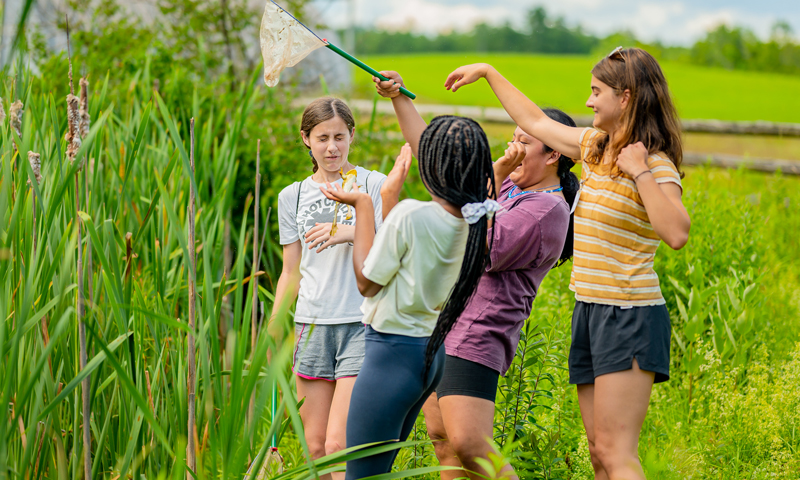With a student to educator ratio of 10:1, groups of up to 120 students participate in six or more hours of outdoor, unplugged E-STEM (Environmental-Science, Technology, Engineering, Math) lessons daily, learning new concepts about how the world works, and following their curiosities.
Over the course of their stay, students draw connections between ecosystems, notice patterns in the world around them and witness natural processes such as cycles, change and disturbance at work in different ecosystems. Students explore the environment first hand, climbing over rocks to discover salamanders, using soil cores to measure nutrients in fields, and recording field observations of a nocturnal forest in their Field Notebooks.
